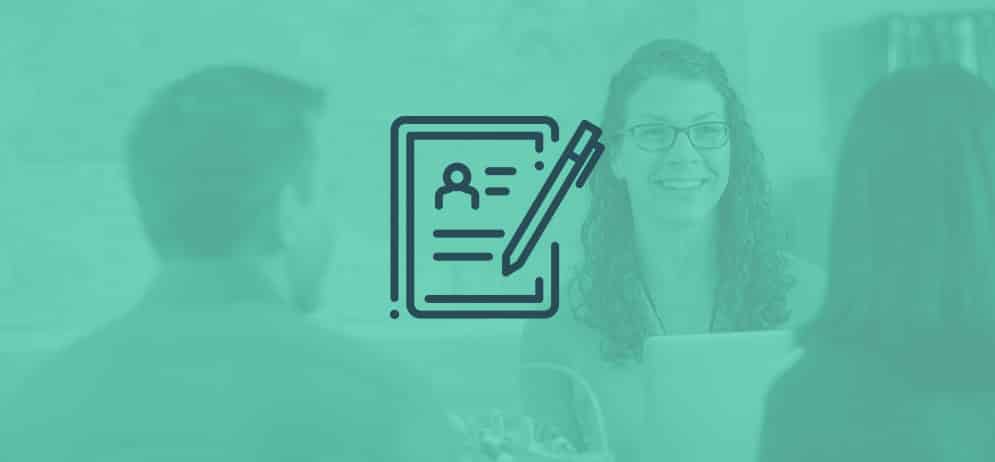*Key points from Carol Kosnitsky’s blog post, presented by Laura Materi, Frontline Education.
The IEP has the potential to “tell the right story” for each student with a disability — to describe the student’s strengths and assets, identify areas of need and chart a pathway for a successful school year. But to be relevant and meaningful, the IEP must be based on current, reliable and valid information. Let’s take a look at 10 sources of information to consider.
- Special Education Assessments — Initially, these assessments help to determine if a student is eligible. Is there a disability, and does the student require specially designed instruction? These assessments also provide instructional information including student strengths, needs and recommendations for instruction and accommodations.
- IEP Progress Monitoring Data — Upon implementation of the initial IEP, progress monitoring data is collected to demonstrate status of goal achievement, effective instructional approaches and the student’s growth rate. This data should inform subsequent present level statements, goal selection, performance criteria and selection of appropriate supports and service.
- Other Assessments — Teams should update information that accurately reflects student’s present levels of performance. Districts use “benchmark assessments” to assess all students at their grade level throughout the school year (e.g. DIBELS, AIMSweb, and STAR). However, for students performing substantially below grade level, these assessments may be too challenging to accurately reflect what the student can do! If it’s established that the student did not meet his or her grade level benchmark (let’s say 4th grade), the proper action would be to assess the student at 3rd grade, then 2nd grade and so on until student meets the benchmark for that grade. Utilize this process and you will certainly have a lot of current and empirical data on what the student CAN do!
- Observations — Observations can help assess students’ functional performance in school settings, including how students generalize skills between the special and general education setting, follow classroom routines, engage in social interactions and manage themselves in the complex general education environment.
- Student Input — Set aside time to discuss with students their strengths, interests, preferences and personal accomplishments prior to the meeting. Help students identify their needs, how to access help and their goals for the upcoming year. This strategy does double duty — IEPs will be informed by student input while students become increasingly more self-aware. Give students the opportunity to present their input in their own words during the meeting. This is both very powerful and empowering!
- Parent Input — No one knows a child better than his or her parents. Contact parents prior to the IEP meeting to discuss input on their child’s strengths, needs, interests and any other information that they want to share. Having the opportunity to think about their input prior to the meeting may increase their participation at the meeting. At the very least, consider the useful information you obtain by simply asking the following question: “This will be a successful year for my child if________.”
- Teacher Input — Classroom teachers have vital information about their students, yet may not know what they should contribute to the IEP. Ask teachers a few targeted questions such as:
- What are the demands for this grade (level of independence; degree of writing, etc.)?
- How does the student perform in these areas compared to classmates?
- How do you address these discrepancies?
- What do you want next year’s teacher to know about this student?
- Grade Level Expectations — The team should be knowledgeable about grade level expectations in order to support a student’s involvement and progress in the curriculum. With this knowledge, the team can prioritize student needs and align the student’s goals, supports and services. Remember, the IEP must describe expected performance versus actual performance and make meaning of the gap!
- Behavioral Data — From basic information such as attendance to more sophisticated data from behavioral intervention plans, behavioral data should be reviewed by teams. Rule of thumb: if concerning patterns emerge from behavioral data, the team should ask additional questions to determine if it is disability-related. Consider if a functional behavioral assessment could shed light on behavioral issues to be addressed in the IEP.
- State Assessments — Increasingly, states are committed to focusing on growth models, allowing teams to determine if students are making progress over time. Regardless of the challenges inherent with state assessments, the team can examine this data to determine if the student is receiving the appropriate accommodations allowable during instruction and assessments.
Tips to Collect and Manage Data
Schools have a wealth of information on students; yet teams may find it difficult to organize and synthesize it all. Here are some tips:
- Share the collection of data. Create a plan as to who will do what and when. This avoids gaps and redundancies.
- Use technology to support collaboration. Many IEP software systems have the capacity for team members to share input. Or your district may use other platforms that allow teams to store and share information throughout the year (progress monitoring data, stakeholder input, etc.). Be sure to follow your district’s policies and procedures on protecting student privacy.
- Develop sets of questions to obtain important information from students, parents and teachers. While everyone will have the opportunity to discuss input at the IEP meeting, providing questions before hand will help everyone to be better prepared.
- Create ways to provide coverage so team members can do observations and collaborate around the IEP process.
Remember, the IEP is only as strong as the foundation on which it is built. Make sure teams collect and use multiple sources of data in order to “tell the right story”!
Developing IEP Goals? Check out core concepts and best practices
